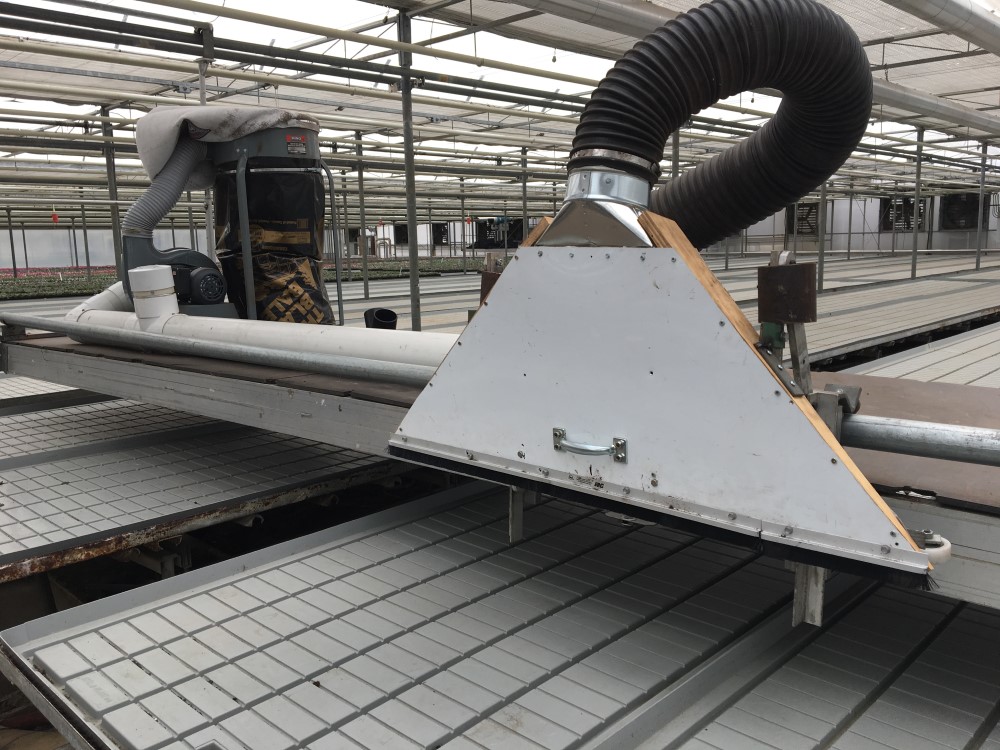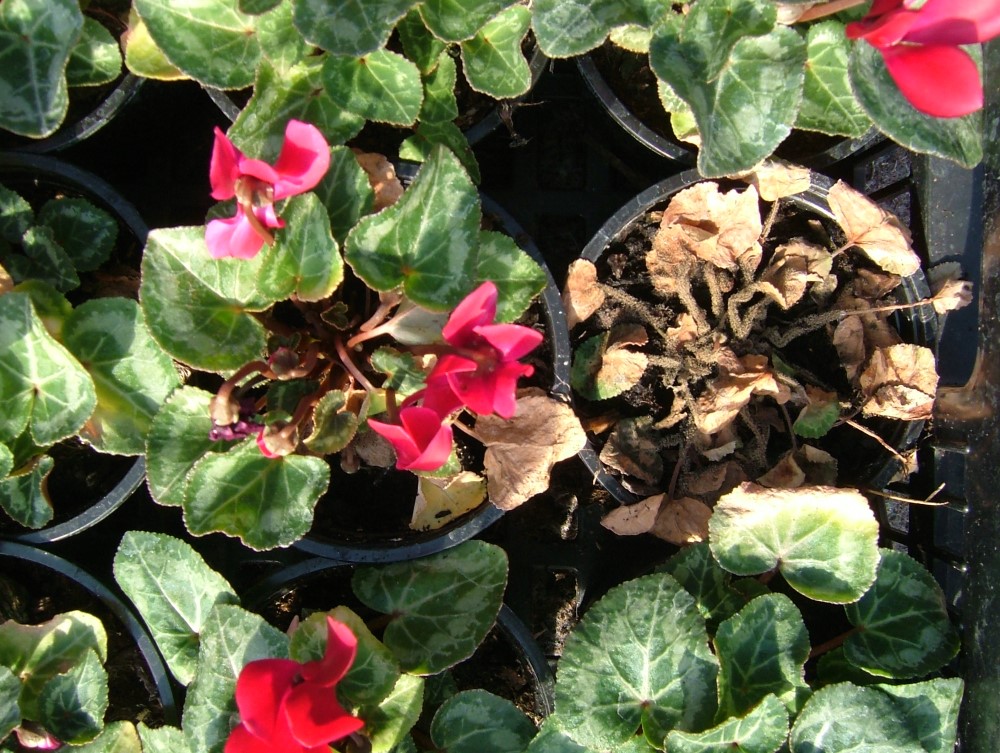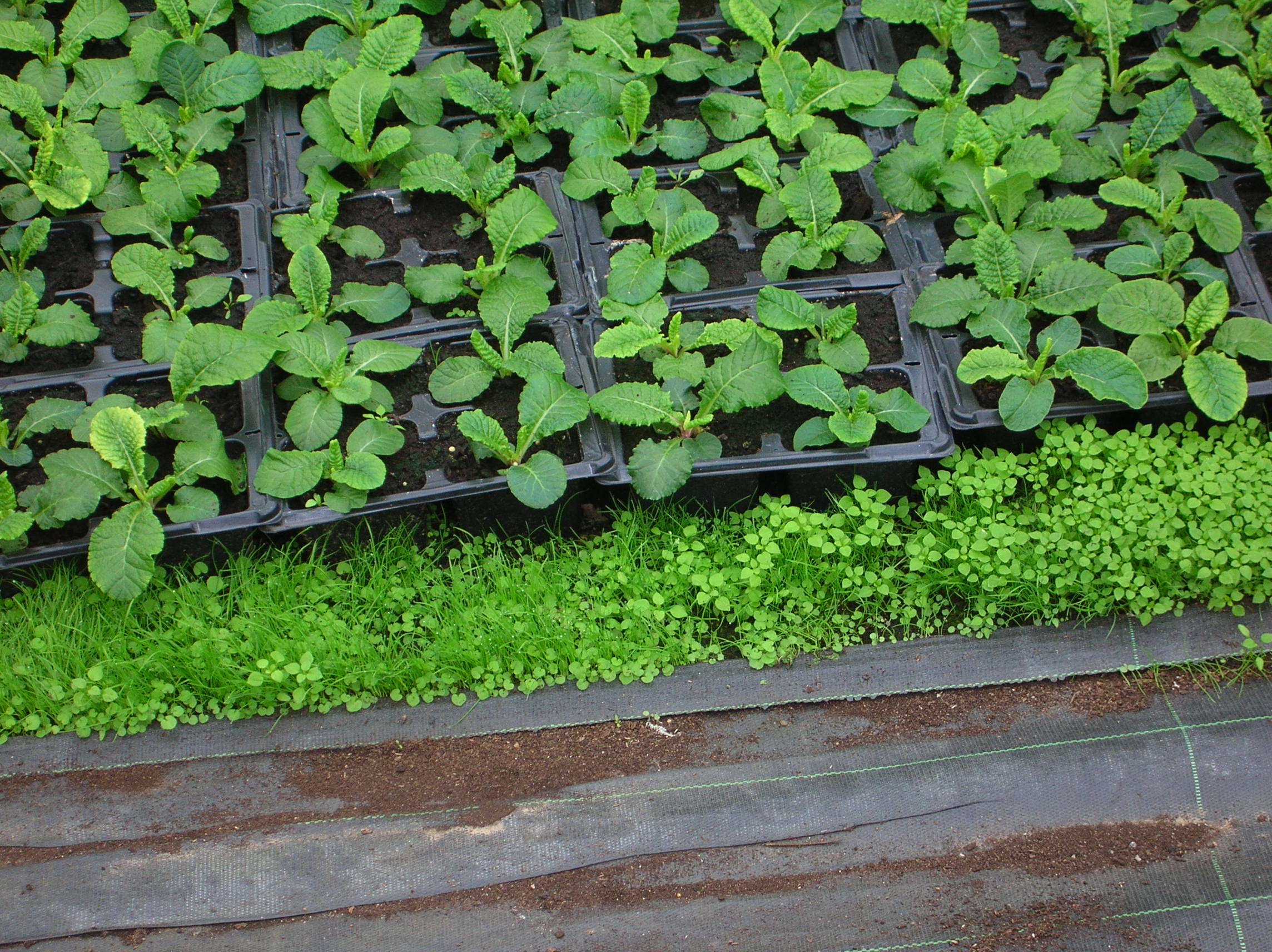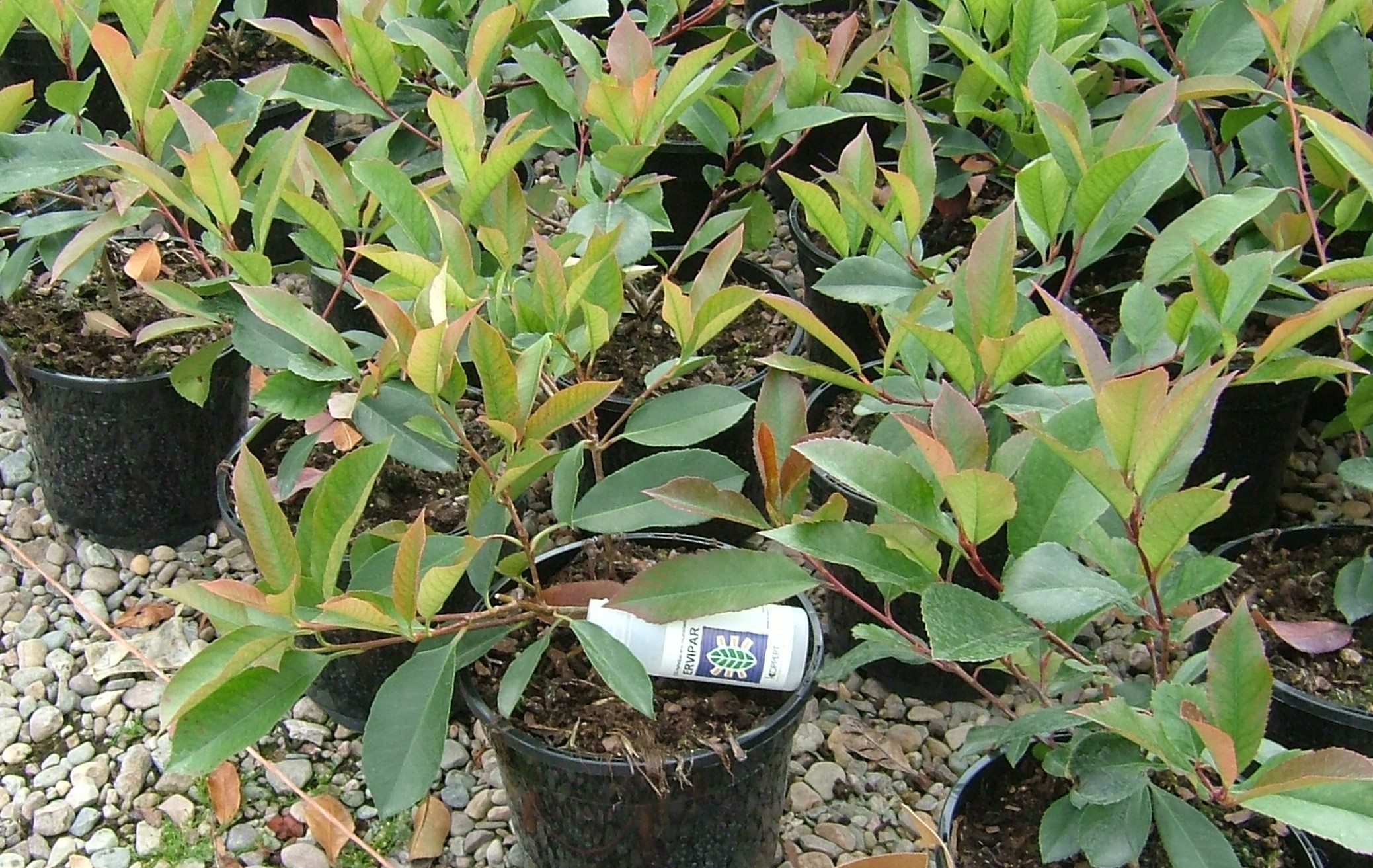Please click here to access the main AHDB website and other sectors.
- Home
- Knowledge library
- Maintaining hygiene on ornamentals nurseries
Maintaining hygiene on ornamentals nurseries
Nursery hygiene standards must be maintained throughout the cropping period for effective pest, disease and weed management.
Back to: Guidelines on nursery hygiene for outdoor and protected ornamental crops
Benches and growing areas
Avoid placing outdoor crops directly onto the ground by using an appropriate ground cover material such as woven plastic sheeting over consolidated gravel. Glasshouse container-grown crops should be placed on capillary matting over a plastic lining or directly onto the floor covering.
Bench or floor coverings can harbour pests and diseases, with many pests having ground-dwelling life stages such as thrips and leaf miner pupae, sciarid and shore fly eggs, larvae and pupae. Other pests, including thrips and spider mites, can drop or be knocked off plants to the ground and survive by feeding on fallen leaves. Spider mites will look to overwinter in places away from plants.
Spores of root or stem base infecting fungal pathogens can leach from the growing medium of infected plants during irrigation, contaminating matting. Roots can grow from containers into the capillary or woven plastic sheeting, increasing the risk of pathogen persistence between crops, for example, in Phytophthora and Pythium species.
Root infection from contaminated matting or the soil/sand beneath it is most likely following flooding. Keep benches, floors and beds level to avoid wet spots. With outdoor crops, ensure there is good drainage from beds. Roadways should be lower than beds or constructed with drains to ensure contaminated surface water drains away from beds.
Brush or vacuum up all debris from the standing area surface between crops. Apply a suitable disinfectant if necessary, especially following a root disease problem, or before a high-value crop, or at an annual clean-up. Ensure that sufficient water is used to soak the matting and any remaining roots thoroughly.
Manage irrigation and misting systems carefully to avoid overwatering and splashing of pooled water onto containers. Ensure that there is good drainage away from outdoor beds preventing upward movement of soil water into the bed.
Cleaning and disinfecting machinery and equipment
Equipment and machinery used daily should be kept clean and free of contamination to prevent spread throughout batches of plants:
- Regularly, ideally daily, clean potting and transplanting machines (especially the fingers on transplanting machines), knives, secateurs and equipment
- Clean and disinfect containers and trays before reuse, using a high-pressure wash with water containing a suitable disinfectant and leave it in contact for the required period of time
- Avoid taking machinery and equipment from ‘dirty’ areas to ‘clean’ areas
- Never borrow dirty machinery or equipment from other nurseries
Testing water for plant pathogens
Regularly test stored water used for irrigation, especially recycled water, to determine if any pathogens are present:
- Take samples at different times in the production cycle, as pathogens can be seasonal in activity, like Phytophthora species
- Take samples at the storage point or water source, and at the point where it is delivered to the plants. Testing at the point of use is critical
- Where using a water treatment system, sampling before and after treatment will help determine how well the system is working
A range of tests are now available, including:
- Bait tests, using plant tissues susceptible to the pathogen(s) of concern
- Lateral Flow Devices (LFDs) to test for Pythium and Phytophthora (in the sediment after filtration)*
- Culturing for bacteria and fungi on selective nutrient media to determine their presence and abundance
Molecular diagnostics are likely to have an increasing place in pest and pathogen detection for nurseries, including the use of portable DNA technologies.
*LFD tests can be done on-site by nursery staff, whilst other tests require samples to be sent to a specialist laboratory. Before sending any sample, check with the testing laboratory on the specifics of the sample required, such as the volume of water, collection depth, storage temperature, etc. and inform them of the pathogen of concern.
For LFDs, contact Pocket Diagnostics at www.pocketdiagnostic.com, and for water testing services, contact Dr Tim. Pettitt at tim.pettitt@cornwall.ac.uk
A nursery designed system for quickly vacuuming benches between crops

Image © AHDB
Disposal of dead, diseased or infested plants
Dead, badly diseased, infested or unwanted plants should be removed from crops as soon as possible.
During crop production, place diseased or infested plants into a sealed bag or container before removal from the production area for safe disposal. Unwanted, flowering plants can harbour thrips, aphids and other pests and should be disposed of promptly.
Waste plants should be placed in a covered skip that is emptied regularly or composted in an area at least 10 m from production areas, preferably downwind and where there is little movement of people or vehicles.
Compost heaps are only permitted if an exemption is obtained from the Environment Agency under the 2006 Agricultural Waste Regulations. Diseased plants must not be composted but disposed of with general waste or removed from the nursery in covered skips or trailers to a local authority disposal site. Check that any seepage from compost heaps (which may contain pathogenic fungi, oomycetes or bacteria) does not contaminate watercourses or the nursery growing area.
Dispose of diseased plants before they infect adjacent ones

Image © AHDB
Weed control in non-cropped areas
Maintain control of weeds in areas such as paths, bed edges, between and around glasshouses, tunnels and buildings, around reservoirs and at the perimeters of the site. Establish at least a 1 m wide weed-free strip around the edges of glasshouses and tunnels.
IPM to reduce pest and disease risks
Integrated pest management (IPM) is the combination of cultural and biological control measures, together with minimal use of compatible plant protection products, to maintain pest, disease and weed levels below economically damaging levels (the term ‘pest’ is used to cover pests, pathogens and weeds). IPM enables growers to produce high-quality plants while meeting customer demands for minimal use of chemicals.
Cultural control methods include nursery hygiene practices such as weed control, plant and sticky trap monitoring, physical screening and avoiding environmental conditions conducive to pest or disease development. Cultural control is especially important in terms of disease management. Maintaining a growing environment favourable to good crop growth will reduce the risk of some diseases becoming established. This applies to both the aerial and root environments.
Examples include:
- Avoiding prolonged periods of high humidity to reduce the risk of botrytis grey mould
- Avoiding prolonged leaf wetness to reduce the risk of downy mildews, rust diseases, white blister and some leaf spots
- Ensuring good drainage and avoiding overwatering and growth checks to reduce the risk of Pythium and Phytophthora root rots
- Avoiding pH extremes to reduce the risk of black root rot and Pythium root rot
Biological control agents and bioprotectants commonly used on (protected) ornamentals include:
- Parasitic wasps
- Predatory mites and insects
- Entomopathogenic (insect attacking) nematodes, fungi and bacteria
- Bioprotectants based on fungi, bacteria and plant extracts for disease control
The timing and release rate of control agents must be scheduled carefully, and their activity monitored. Programmes must be combined with compatible plant protection products (where needed) to avoid adverse effects on these biological control systems.
Train staff and operators in pest, disease, weed and natural enemy recognition and in methods for correctly applying biological control agents, bioprotectants and compatible plant protection products within IPM programmes.
Useful links
For more information see the following AHDB publications:
Factsheet 03/14 ‘Use of disinfectants in protected ornamental plant production'
Factsheet 21/15 ‘Testing water for plant pathogens’
Factsheet 22/15 ‘Methods of water treatment for the elimination of plant pathogens’
Authors
The content for these web pages were originally authored for AHDB by:
Author(s) – Dave Kaye and Erika Wedgwood. ADAS Horticulture.
Original author(s) – Tim O’Neill, Wayne Brough, John Atwood and Jude Bennison, ADAS.
Webpage content correct as of June 2021.
Got a question? Ask a member of the team:
Weeds growing in exposed bed edges will contaminate adjacent crops

Image © AHDB
Use of biological control agents is now an established practice in the production of ornamentals

Image © AHDB
Topics:
Sectors:
Tags:

